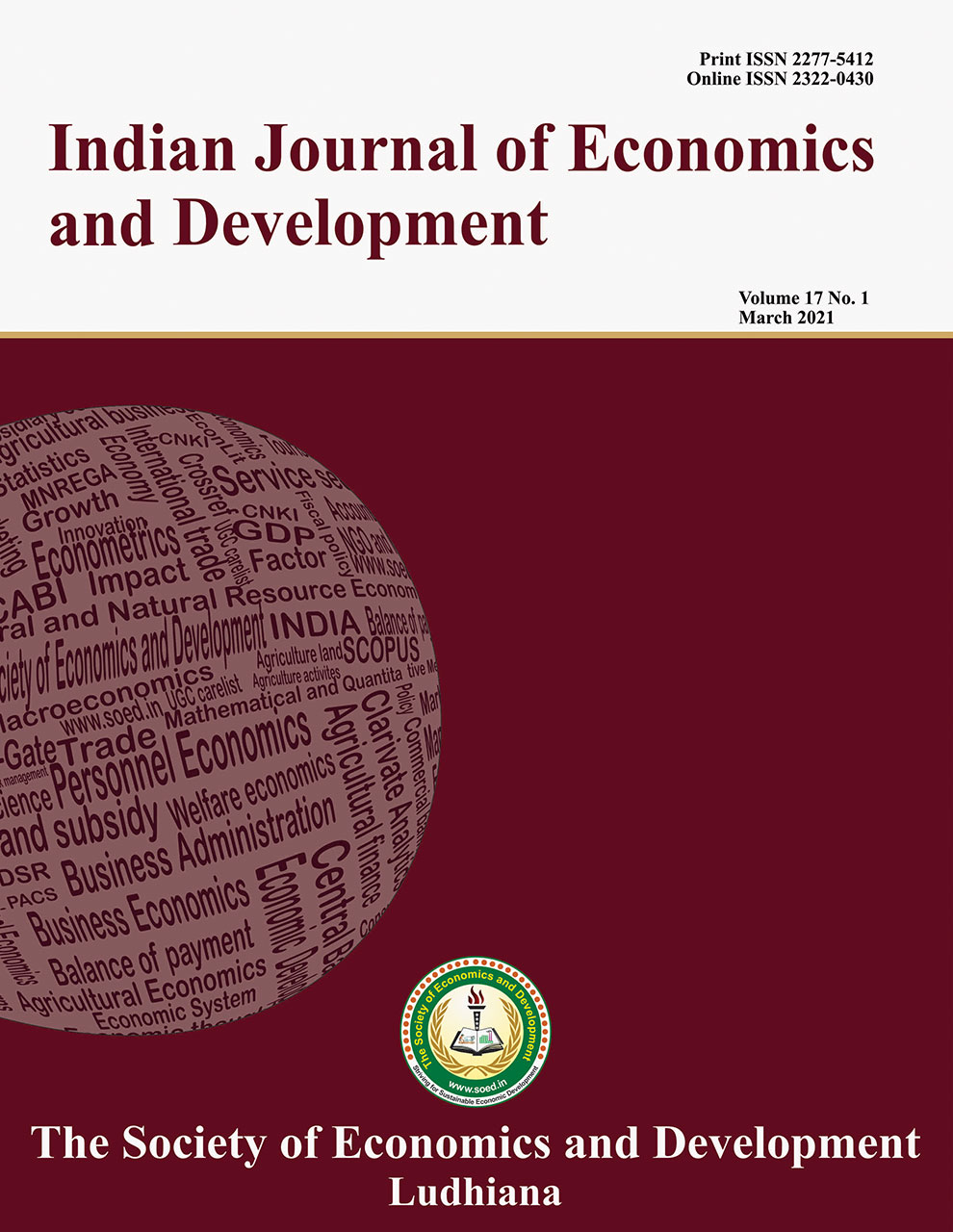Socio-economic and Value Chain Analysis of Goat Farming in South Gujarat Region

Price: ₹ 1000
Author: Narendra Singh1 and V.M. Thumar2
Author Address: 1Professor and Head, Department of Agriculture Economics, N.M. College of Agriculture, Navsari Agriculture University (NAU), Navsari-396450 (Gujarat), and 2Associate Professor and Planning Officer, Directorate of Research, Navsari Agriculture University (
Keywords: Marketing channel, price spreads, socio-economic, value chain analysis.
JEL Codes: C81,Q12, Q13, Q18,
Abstract
The socio-economic and value chain study of goat farming from different herd size groups of surati and local breed was conducted in South Gujarat region of Gujarat state. The study was undertaken in randomly selected villages of Navsari, Valsad and Tapi districts of South Gujarat region. The goat keeping household of selected villages were divided into two groups maintaining surati and local breeds. The study revealed that the net income derived from different herd size groups of goats was much higher among surati breed than local breed. This clearly showed large (16 to or more goats, kids & buck) herd size group of goat keepers achieved higher profits than small (1 to 5 goats, kids & buck), and medium (6 to 15 goats, kids & buck) herd size groups in both breed of goats. The overall annual net income per goat was worked out to be `1283.51 and 994.90 in surati and local breed of goats. The annual income of surati breed of different herd size groups was higher in comparison to local breeds. This showed that the improved breed of surati goats have positive impact on the income of goat keepers. Value chain analysis indicated that there were four marketing channels found in male goat marketing in the study area. The major marketing cost components were assembling, maintenance, animal preparation, labour and transportation for sellers and market fee, labour and levy for buyers. The gross market margin was found higher in the Farmer-Farmer channel (95.89%). Therefore, this channel had turned out to be most efficient. It was found that as the number of intermediaries between producer and ultimate buyer increases, the producer’s share went on decreasing.
Description
Indian Journal of Economics and Development
Volume 16 No. SS, 2020, 447-451
DOI: https://doi.org/10.35716/ijed/NS20-021
Indexed in Clarivate Analytics (ESCI) of WoS
Narendra Singh1 and V.M. Thumar2
1Professor and Head, Department of Agriculture Economics, N.M. College of Agriculture, Navsari Agriculture University (NAU),
Navsari-396450 (Gujarat), and 2Associate Professor and Planning Officer,
Directorate of Research, Navsari Agriculture University (NAU), Navsari- Gujarat -396450
Corresponding author’s email: vallabhthumar@gmail.com



